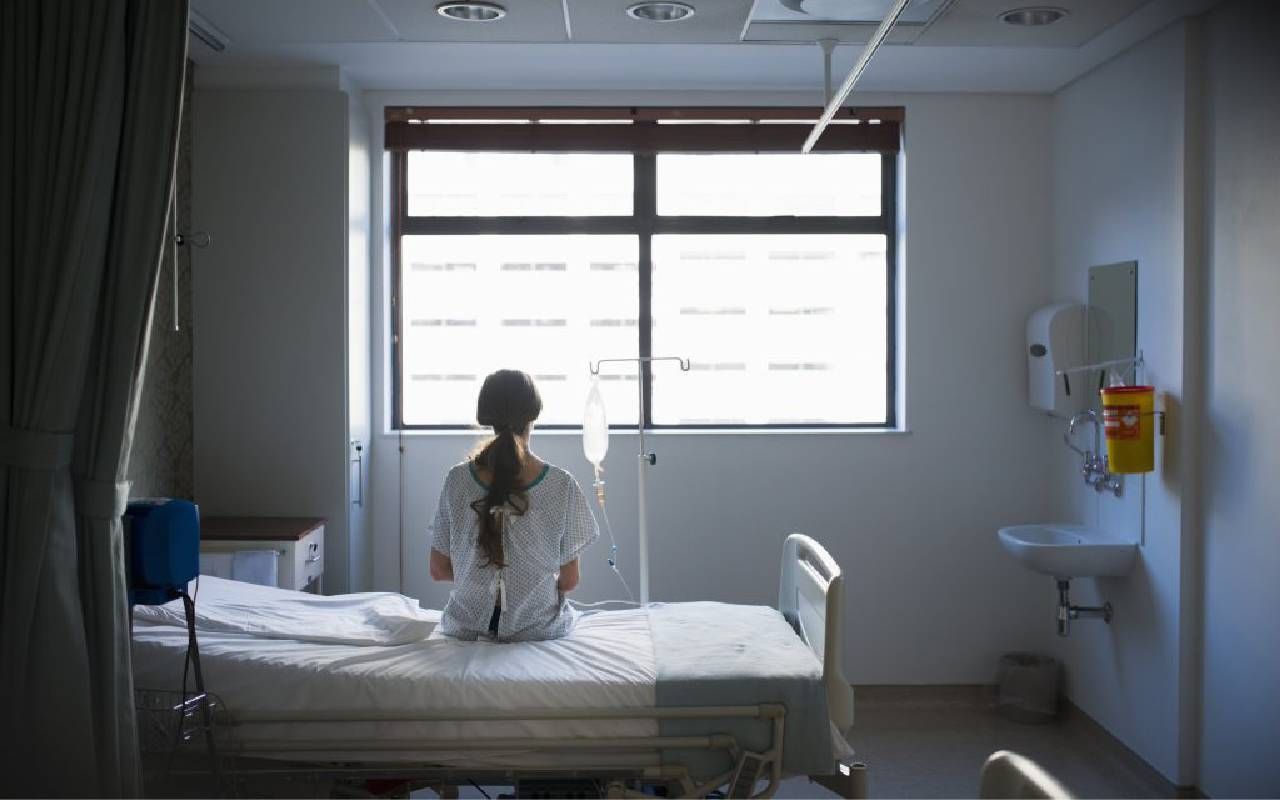A New Approach to Treating Ovarian Cancer
Some doctors are hopeful about a new strategy: the removal of the fallopian tubes, where 70% of the most common types of ovarian cancer start
For 18 months, Nicole Andrews kept returning to her doctor with new symptoms — irregular vaginal bleeding, backaches, urinary urgency and bloating that made her clothes too tight. One day during the COVID pandemic, the 53-year-old former college professor in Houston, Texas sat on the sofa.
"My dog laid his head on my abdomen and I yelled with pain," she says. "I knew something was seriously wrong." Within a few days, Andrews had an MRI and surgery for a rare type of ovarian cancer. "I was shocked. I thought ovarian cancer was a disease for old women."

"Despite significant advances in treatment for people with ovarian cancer, the overall mortality rate remains high, with 5-year survival below 50% for women diagnosed with advanced-stage disease."
A Wily Foe
By the end of this year, some 19,700 women, with an average age of 63, will be diagnosed with ovarian cancer — called the silent killer — and 13,270 will die from it. Both cases and deaths from the disease fell slightly over the last decade, thanks to the wide use of birth control pills, reduced reliance on hormone replacement therapy in postmenopausal women and improved treatments.
But for the doctors who have dedicated their lives to fighting the disease, there's still deep frustration. "Despite significant advances in treatment for people with ovarian cancer, the overall mortality rate remains high, with 5-year survival below 50% for women diagnosed with advanced-stage disease," says Sarah Adams, MD, a professor of gynecologic oncology at the University of New Mexico Comprehensive Cancer Center and scientific advisor to the Ovarian Cancer Research Alliance (ORCA), a support and advocacy group.
Investigating a Novel Approach
However, Adams and others are hopeful about a new strategy; the removal of the fallopian tubes, where 70% of the most common types of ovarian cancer start.
"Women should ask their doctors about whether salpingectomy is planned as part of pelvic surgery, and should consider undergoing it if feasible."
Recent data show that women who underwent the procedure during another planned gynecological surgery, such as sterilization or hysterectomy, were less likely to be diagnosed with ovarian cancer than those whose tubes were left intact. This surgery is called opportunistic salpingectomy.
"Previously, when the uterus was removed, the tubes and ovaries were often left behind," says Adams. "Now it is much more common to remove the tubes and leave only the ovaries."
Leading reproductive and cancer organizations, including OCRA, the Society of Gynecologic Oncology, and the American College of Obstetricians and Gynecologists, have officially endorsed the removal of the fallopian tubes for women who are already having gynecological surgery.
"Women should ask their doctors about whether salpingectomy is planned as part of pelvic surgery, and should consider undergoing it if feasible," says Adams. This surgery may also be offered outright to people with genetic mutations that confer a greater-than-average risk for ovarian cancer. These include BRCA 1 and BRCA 2 mutations, the so-called breast cancer genes.
The Lack of a Screening Method
For many years, researchers have worked to develop a screening test like mammograms for breast cancer to detect the disease early before symptoms arise when treatment would presumably be more effective. But ovarian cancer is notoriously difficult to diagnose. The tiny almond-shaped organs lie deep in the pelvis and can't be felt or X-rayed easily like breasts.
One promising approach involved a blood test that looks for a protein which can be elevated in people with ovarian cancer, called CA-125, coupled with transvaginal ultrasound. This technology captures images of the ovaries through the walls of the vagina. But recent studies showed it made no difference in detection, sending researchers back to the drawing board.
Know Your Risk
In the absence of a screening tool, women need to be aware of their risk for ovarian cancer. Having an inherited genetic mutation or a family history of breast, ovarian, uterine or colorectal cancer increases a woman's chances of developing ovarian cancer, according to OCRA.
"Women should definitely report symptoms like bloating, pelvic pain or changes in bowel or bladder habits to their health care providers."
Almost 20% of ovarian cancer patients have an inherited genetic mutation that may be the cause of their cancer. Genetic testing can help determine if women have an elevated risk for the disease. It typically includes counseling and guidance in managing the risk.
Age is also a factor. The risk of ovarian cancer increases as you get older, and most cases occur after menopause in women aged 55 to 64. Other culprits: Never having had children, a history of infertility and endometriosis, a condition in which tissue that ordinarily lines the uterus migrates to other parts of the abdomen, causing pain and fertility issues.
On the flip side, removal of the fallopian tubes, pregnancy, breastfeeding and the use of oral contraceptives reduce the risk of developing ovarian cancer. Women who used oral contraceptives for five or more years slash the risk of cancer in half compared to those who never used them.
Stay Attentive to Symptoms
Advocacy groups also push for greater awareness of symptoms like those that Andrews experienced. Although it's generally best to detect and treat ovarian cancer in the early stages, which is usually before symptoms arise, being attuned to it can still make a difference. Women know their bodies better than anyone and often pick up problems themselves.
"Women should definitely report symptoms like bloating, pelvic pain, or changes in bowel or bladder habits to their health care providers," says Adams. "OCRA still recommends that women be attentive to new symptoms to avoid delays in diagnosis."
As board chair of the STAAR Ovarian Cancer Foundation, Andrews has organized events and distributed T-shirts listing potential signs of cancer everywhere, even on college campuses. Forms of ovarian cancer like hers can start as early as age 19.
"One woman told us that she was wearing her shirt in Walmart and a man said, 'Excuse me, can I take a picture of your shirt? My wife has several of those symptoms,'" says Andrews. "That's the whole point. Hopefully we can get to some women while there's still a chance for a cure."


